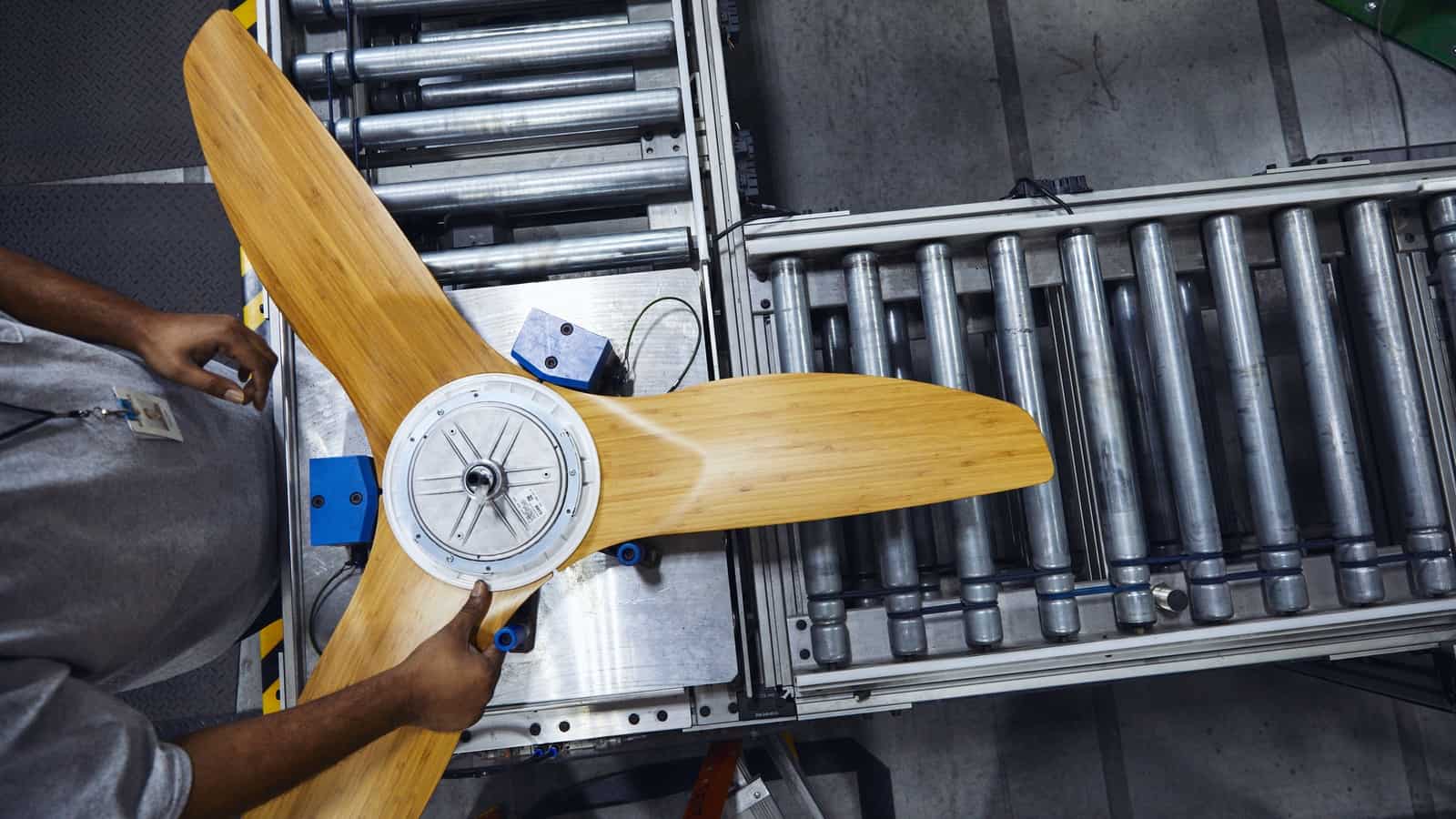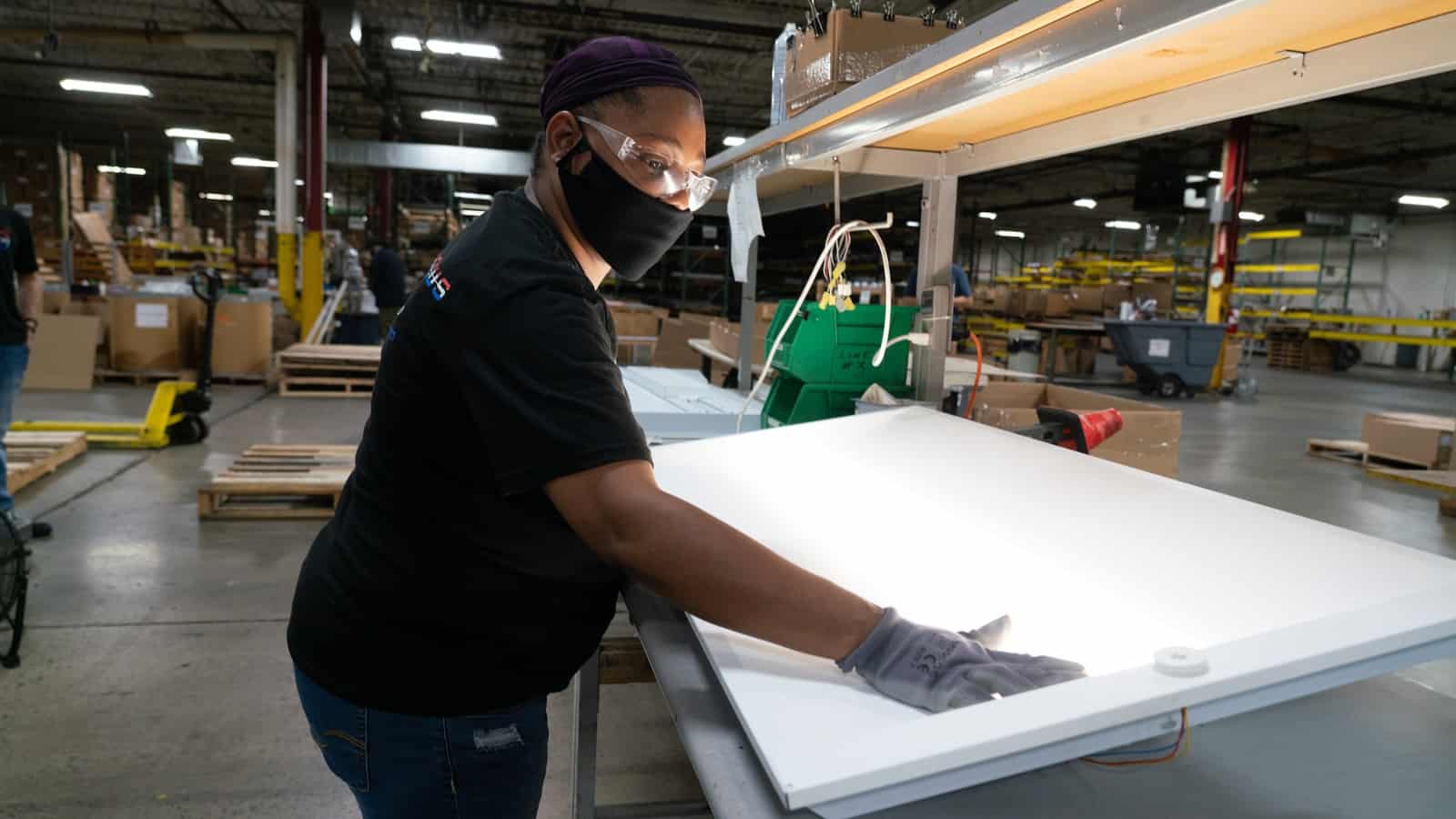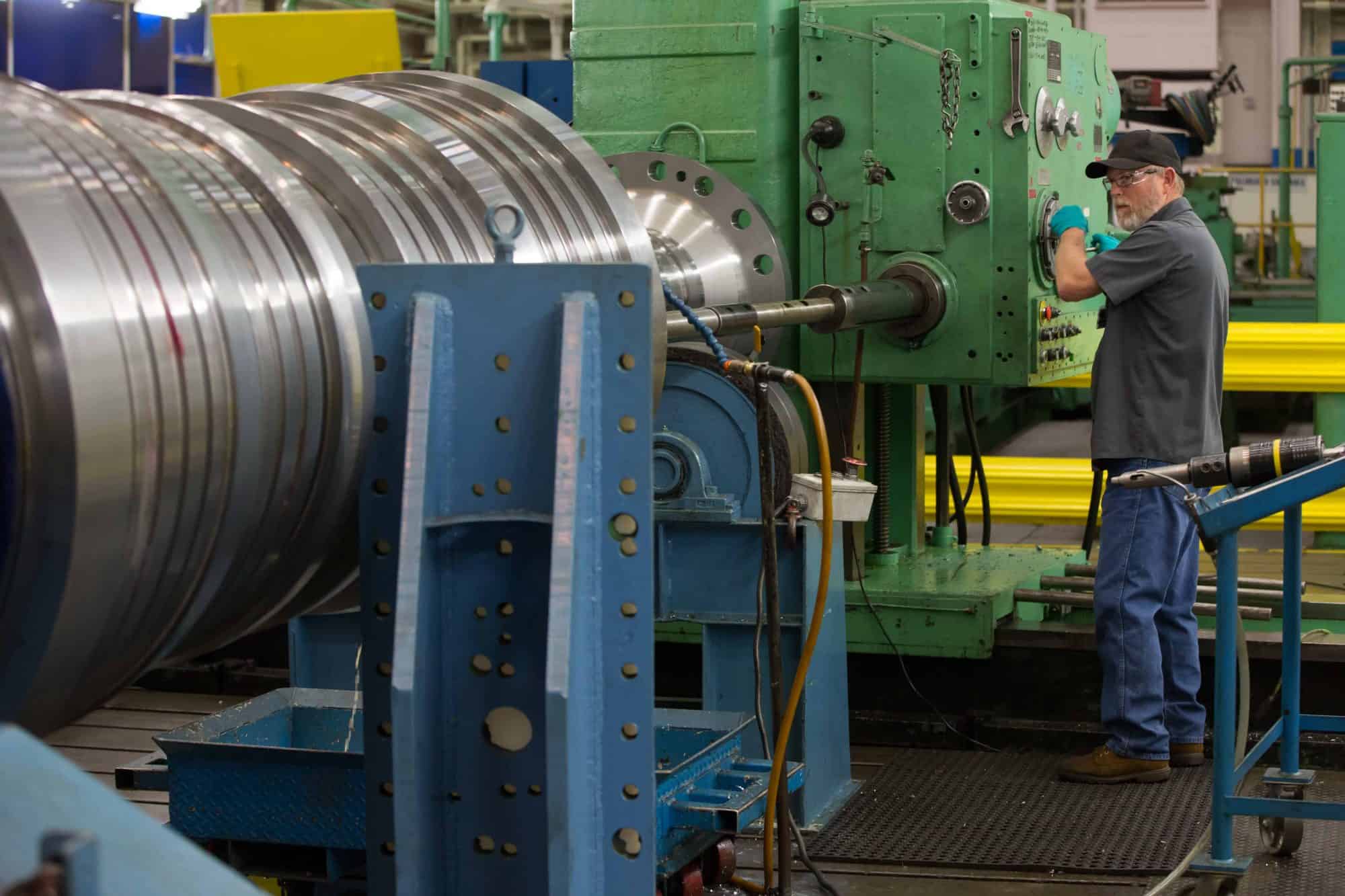Manufacturers Caution Against Tax Increases as Supply Chain and Workforce Crises Persist
Optimism remains, but “increased costs” tops manufacturers’ concerns in final quarterly outlook survey of 2021
Washington, D.C. – The National Association of Manufacturers released its Manufacturers’ Outlook Survey for the fourth quarter of 2021, showing manufacturers remain mostly optimistic in their economic outlook (86.8%, down from 87.5% in Q3) but are significantly concerned with issues like inflation, hiring and potential tax increases targeting manufacturers.
“Manufacturers are working overtime to fill more than 1 million open jobs, including through our nationwide Creators Wanted workforce campaign,” said NAM President and CEO Jay Timmons. “On top of that, we’re grappling with a supply chain crisis. Despite the challenges confronting us, manufacturers remain bullish on the future. But if Congress passes legislation with taxes that hit manufacturers harder than other industries, our entire recovery will be thrown off course. If new taxes land on our shoulders, it will undo all the progress we’ve made since the 2017 tax reform law.”
“Manufacturers have kept our promise to hire more workers, raise wages and benefits and invest in our communities. Our question to Congress—the message of this survey—is, do we want to weaken our recovery by undermining manufacturers’ competitiveness? Raising taxes on manufacturers will not help us build back better. It will tear down what we’ve achieved.”
Key survey highlights:
- Top issues:
- Increased raw material costs (87.1%), the number-one issue for the fourth straight quarter
- Supply chain challenges (84.5%)
- Attracting and retaining a quality workforce (82.7%)
- 87.8% of respondents said an increased tax burden on income from manufacturing activities would make it more difficult to expand their workforce, invest in new equipment or expand their facilities
- 85.2% said they have open positions they cannot fill.
- 73.6% of respondents said supply chain bottlenecks negatively impacted their company’s outlook for production, hiring and overall business activity.
Read the full Q4 2021 Manufacturers’ Outlook Survey results here.
Background on manufacturing growth following the enactment of 2017 tax reform:
- In 2018, manufacturers added 263,000 new jobs. That was the best year for job creation in manufacturing in 21 years.
- In 2018, manufacturing wages increased 3% and continued going up—by 2.8% in 2019 and 3% in 2020. Those were the fastest rates of annual growth since 2003.
- Manufacturing capital spending grew 4.5% and 5.7% in 2018 and 2019, respectively.
- Overall, manufacturing production grew 2.7% in 2018, with December 2018 being the best month for manufacturing output since May 2008.
-NAM-
The National Association of Manufacturers is the largest manufacturing association in the United States, representing small and large manufacturers in every industrial sector and in all 50 states. Manufacturing employs more than 12.5 million men and women, contributes $2.52 trillion to the U.S. economy annually and has the largest economic multiplier of any major sector and accounts for 58% of private-sector research and development. The NAM is the powerful voice of the manufacturing community and the leading advocate for a policy agenda that helps manufacturers compete in the global economy and create jobs across the United States. For more information about the NAM or to follow us on Twitter and Facebook, please visit www.nam.org.
Tax Policy Makes Innovation Possible for Big Ass Fans

For Big Ass Fans, a Kentucky-based company that manufactures fans, evaporative coolers and controls for industrial, agricultural, commercial and residential use, the eye-catching name isn’t the only thing that makes them distinctive. The company is also a leader in research and development, crediting U.S. tax policy with supporting its innovations and the jobs they create.
Investing in innovation: BAF has spent millions of dollars in R&D, even building an R&D lab on its global headquarters campus in 2008. Most recently, it pioneered new ways of disinfecting air to keep manufacturing employees healthy during the COVID-19 pandemic. And when Congress approved tax reform in 2017—including a lower corporate tax rate—the company got additional fuel for its efforts.
- “The more incentives that are there for us to create and for our customers to purchase, the more we can deliver for everyone,” said BAF Government and Public Relations Director Alex Risen.
Risen cautions, however, that a higher corporate tax rate could impact the company’s ability to grow. Meanwhile, a prospective tax change on R&D spending could stymie innovation by requiring the amortization of expenses (as opposed to current tax policy, which allows expenses to be fully deducted in the same year).
- “We’re always going to innovate. That’s in our DNA. But if our customers have higher corporate tax rates, that can take money out of our pockets and theirs,” said Risen. “If this new R&D tax policy detracts from a company’s ability to push and pioneer…then we’re all at risk of losing out on expedited innovation.”
Creating American jobs: BAF isn’t just using its revenues to invest in innovation; it’s also working to bring jobs and supply chains into the United States. In addition to its headquarters in Lexington, Kentucky, the company has offices in Canada, Australia and Singapore. Up until recently, it also had a manufacturing facility in Malaysia in addition to a sales office there—but BAF is in the process of moving those production jobs to the United States.
- “It doesn’t just mean new jobs at BAF; it brings more business to American vendors and suppliers,” said Risen. “It allows them to continue trying to grow even during a downturn and uncertain times.”
Bolstering supply chains: In addition to job creation, strengthening the supply chain was another top priority for BAF.
- “We were already working on moving those operations before the pandemic hit, but the pandemic is a reminder that you want to have that supply chain close,” said Risen. “We’ve been fortunate that we haven’t had to slow production down, because the majority of our product is here in our backyard. That speaks to where we want to be as a company that is internationally headquartered in the U.S. but serves 175 countries. We want to do our part in order to make high-end machinery a U.S. export.”
NAM support: To support companies like BAF and its customers, the NAM is leading the effort to ensure that the tax code keeps encouraging innovation. Recently, a bipartisan group of U.S. policymakers introduced legislation that would allow manufacturers to continue to deduct their R&D expenses immediately—a move that the NAM advocated for. The NAM is also working to strengthen U.S. supply chains, releasing an agenda for such actions last year.
The bottom line: “A high tide floats all boats,” said Risen. “We need to continue to innovate and deliver for companies in America—and we need to help Americans push the envelope, innovate and deliver for all of us.”
Why America Is a Great Location for Manufacturers

Manufacturing is a key driver of the American economy—but how does manufacturing in the United States stack up against the rest of the world?
Recently, The Manufacturing Institute and KPMG—a professional services firms providing innovative business solutions and audit, tax, and advisory services—released a new assessment of the cost of doing business in the manufacturing sector for the United States and 16 other major manufacturing exporting nations around the globe.
High costs, but high value: The study found that primary costs (compensation, property, utilities, taxes and interest rates) in the U.S. are on average 16% higher than in the other markets—yet the U.S. ranks fairly high on the list overall at #5.
- Another number bears that out: over the past decade, foreign direct investment in U.S. manufacturing has jumped from $569.3 billion in 2006 to a record $1,785.7 billion in 2019.
The benefits of tax reform: Tax reform made the U.S. a more desirable location for manufacturers, the study found. It compared how the U.S. would have ranked with its pre-reform corporate tax rate of 40% (the combined federal and state tax rate) instead of the post-reform corporate rate of 27%. With the old rate, the U.S. would have ranked only 11th.
The benefits of skilled workers: A major U.S. advantage is its supply of high-skilled workers. According to the study, the U.S. ranks at the top of the list for real value added per employee, along with Ireland and Switzerland. As manufacturing has become increasingly advanced, the need for sophisticated employees keeps growing.
While it’s true that American manufacturing requires more skilled workers, as The Manufacturing Institute has previously shown, the existing workforce is still a big draw due to its productivity.
The bottom line: The United States is an attractive location for manufacturers, despite relatively high costs, because of high worker productivity and the overall business environment.
The last word: “We need to continue to push the envelope of technological innovation and workforce development and recruitment in the manufacturing sector,” said Chad Moutray, chief economist for the National Association of Manufacturers and director of the Center for Manufacturing Research at The Manufacturing Institute. “These efforts will serve to strengthen the sector overall, but also help to maintain the nation’s global competitiveness.”
The Latest News on Vaccines

Here’s some good news: Moderna’s final-stage COVID-19 vaccine test began on Monday, according to The Wall Street Journal (subscription). The company’s researchers intend to conduct a nationwide, 30,000-person trial of its experimental vaccine, with the goal of testing whether two doses of the product can safely protect against COVID-19.
The timeline: Moderna is hoping that, with positive results, a vaccine could be available as early as this fall.
And more good news: Pfizer and German biotech BioNTech have also started their 30,000-person trials, which will extend around the globe. Their timeline? To get the vaccine into regulatory review by the fall.
So once a vaccine is ready, what happens next? A whole bunch of logistical challenges is what. The Atlantic details some of the complications involved:
- A vaccine probably won’t offer complete protection, though it will prevent severe cases.
- Production will be a challenge, with manufacturers seeking to make hundreds of millions of doses in record time and jockeying for supplies like glass vials.
- Distribution will face major hurdles as federal and state governments are forced to coordinate vaccine delivery.
- One in five Americans say they will refuse to get a vaccine even if it’s available, while nearly a third say they haven’t decided.
And one last PSA: STAT News gives us a heads-up that these vaccines may create some physical discomfort. That may actually be good news—the reaction could be a sign of your immune system going to work—but it’s probably best not to expect an entirely pleasant experience from a potentially lifesaving vaccine.
As always, your best bet for now is to follow CDC guidelines, wash your hands, maintain social distancing and wear a face covering.
Manufacturers Unveil Industry COVID Shared Practices
Manufacturing Leadership Council Releases COVID Operating Practices from Leading Manufacturers
Washington, D.C. – Today, the Manufacturing Leadership Council, a division of the National Association of Manufacturers, released a new collection of emerging strategies and operational practices that leading manufacturers of all sizes are implementing to keep their employees safe and facilities operating. The MLC’s “New Operational Practices to Consider in the Time of COVID-19” brings together the best shared practices within the industry to help manufacturers continue to lead the way as America moves from response to recovery and renewal.
“Manufacturers have been on the front lines throughout this crisis, and this guide leverages the experiences and real-world practices that manufacturers across America have put into place. We’re all looking to get back to some sense of normalcy, but that’s not possible unless we can protect manufacturing workers,” said NAM President and CEO Jay Timmons. “By collecting these practices, the MLC is helping all manufacturers continue to set high standards for protecting employees, families and communities, while creating products essential to our daily lives.”
Shared Practices Breakdown:
- Site Access to Mitigate Exposure
- Workstation Measures to Promote Social Distancing
- Facilities and Traffic Management
- Shift and Team Design
- Leave Policies
- Illness or Diagnosis Response
- Essential Travel Policies
- Returning Nonessential Workers
The MLC compiled and shared these practices to assist manufacturers taking steps in their facilities to meet or exceed existing guidelines from the various federal agencies while also mitigating operational and business risks that are outside the scope of such guidance.
“Since this crisis began, the NAM has been working with Vice President Pence and the Coronavirus Task Force, Centers for Disease Control and Prevention, Occupational Safety and Health Administration and others to relay real time information from our industry and to ensure manufacturers received the critical guidance they needed to operate safely,” said NAM COO Todd Boppell. “The MLC has also convened thousands of manufacturing leaders to share practices and develop new ideas for operating safely through this crisis. Manufacturers have come together to help each other and to help our country.”
This information is not meant as authoritative legal, medical or regulatory guidance or advice. It is not an exhaustive list of operational practices in the COVID-19 environment but rather represents some of the most common “best practices” communicated to the National Association of Manufacturers.
To read the full document click here.
-MLC-
The Manufacturing Leadership Council is the world’s first member-driven, business leadership network dedicated to helping senior industry executives identify the opportunities created by transformational digital technologies in the operation, organization, and leadership of manufacturing enterprises as they pursue their journeys to Manufacturing 4.0. For more information visit https://www.manufacturingleadershipcouncil.com/
-NAM-
The National Association of Manufacturers is the largest manufacturing association in the United States, representing small and large manufacturers in every industrial sector and in all 50 states. Manufacturing employs more than 12.8 million men and women, contributes $2.37 trillion to the U.S. economy annually and has the largest economic multiplier of any major sector and accounts for 63% of private-sector research and development. The NAM is the powerful voice of the manufacturing community and the leading advocate for a policy agenda that helps manufacturers compete in the global economy and create jobs across the United States. For more information about the Manufacturers or to follow us on Twitter and Facebook, please visit www.nam.org
Timmons Delivers 2020 NAM State of Manufacturing Address in Iowa
Speech Marked 125th Anniversary of NAM’s Founding and Highlighted ‘Creators Wanted’ Campaign to Address Growing Workforce Shortage
Washington, D.C. – National Association of Manufacturers President and CEO Jay Timmons delivered the eighth-annual NAM State of Manufacturing Address today at equipment manufacturer Vermeer Corporation in Pella, Iowa. Speaking to Vermeer Corporation employees, business and community leaders and local manufacturers, Timmons highlighted the NAM’s ambitious plan to address the industry’s growing workforce crisis with the groundbreaking, multimillion-dollar “Creators Wanted” campaign.
In his remarks, Timmons said:
“For 125 years, your NAM has led the business community and fought for all who make things in America. And all of you in this room, and the 13 million men and women in our industry, some of whom are watching today, are part of the storied history of building an exceptional nation. And Vermeer, this very company, embodies the story of manufacturers’ progress.”
. . . .
“In this pivotal year, the NAM and The Manufacturing Institute, our workforce and education partner, are setting out on an unprecedented campaign to inspire a new generation—and tell the real story of our industry. . . . Our historic effort, called “Creators Wanted,” is a capital campaign that will support the programs of the Manufacturing Institute—including the STEP Women’s Initiative, youth engagement and Heroes MAKE America, which trains our returning servicemembers for high-paying manufacturing jobs.”
. . . .
“Just yesterday, in his remarks at the World Economic Forum, President Trump touted manufacturing’s growth and success during his presidency. As I’ve said before, from tax reform to regulatory certainty to leveling the playing field, promises made to manufacturers have been promises kept—and the employment and output numbers show it.”
. . . .
“Here’s what I will say about this election . . . It’s not the label next to a candidate’s name—whether an “R,” a “D” or an “I”—that determines whether he or she will be a good president or even a good member of Congress. The test is whether he or she will work to uphold the values that make America exceptional. These are the same four values, the same four pillars, that make our industry’s success possible.”
Timmons also noted the generous contributions made by Vermeer and Pella Corporation to the NAM’s Creators Wanted campaign.
“And I am proud to announce today that Vermeer Corporation, along with your foundation and Mary and Dr. Dale Andringa, have contributed $100,000 to this cause. And another local manufacturer, Pella Corporation, is also leading by example with a $100,000 contribution of their own,” said Timmons.
Vermeer Corporation President and CEO Jason Andringa thanked Timmons for his visit and the NAM’s commitment to ensuring the long-term success of manufacturing in the United States.
“Thank you to Jay Timmons and the National Association of Manufacturers for visiting Vermeer Corporation and recognizing the incredible work of our team members and manufacturers across the country,” said Andringa. “These men and women truly demonstrate the impact our industry makes every day and represent the success of American manufacturing.”
To read the full address, click here.
-NAM-
The National Association of Manufacturers is the largest manufacturing association in the United States, representing small and large manufacturers in every industrial sector and in all 50 states. Manufacturing employs more than 12.8 million men and women, contributes $2.37 trillion to the U.S. economy annually and has the largest economic multiplier of any major sector and accounts for 63% of private-sector research and development. The NAM is the powerful voice of the manufacturing community and the leading advocate for a policy agenda that helps manufacturers compete in the global economy and create jobs across the United States. For more information about the Manufacturers or to follow us on Twitter and Facebook, please visit www.nam.org.
New Report Dives Into Retaining The Aging Manufacturing Workforce

Right now, one-quarter of the manufacturing workforce is over 55 years old. Meanwhile, the manufacturing industry is struggling to attract enough younger workers with the right skills and qualifications. Facing a workforce crisis—with open jobs in manufacturing recently reaching an all-time high—manufacturers are finding that retaining older workers is not only a necessity but an asset.
The Manufacturing Institute’s Center for Manufacturing Research, in partnership with the Alfred P. Sloan Foundation, recently conducted a survey to discover how companies are addressing this shifting demographic challenges.
This workforce issue affects nearly all manufacturers, the study found. Ninety-seven percent of respondents reported that they fear losing institutional knowledge when these workers depart.
“Manufacturing is facing a demographic sea change—leaders in the industry know it, and many are proactively adapting to it,” said Chad Moutray, the Manufacturing Institute’s Center for Manufacturing Research director and the National Association of Manufacturers’ chief economist. “Given the current workforce crisis, other manufacturers should look to the successful initiatives being implemented in the industry and collectively expand on them to develop the workforce of tomorrow. The simple fact is that companies are very concerned about losing their top talent to retirement and are finding creative ways to keep them longer and to train younger workers.”
The study also examined the innovative approaches manufacturers can use to extend older workers’ productivity and help transfer institutional knowledge to the next generation. For example, manufacturers are implementing upskilling and training programs to address the challenges this demographic may experience. Sixty-nine percent of companies said they had on-the-job training programs, and 54 percent said they have internal technical training programs.
“Manufacturers are utilizing the expertise of their older workers, implementing policies and procedures to keep them longer and creating opportunities to pass on their knowledge and talents to the next generation,” said Carolyn Lee, the Manufacturing Institute’s executive director. “The reason for this is clear: unlocking the knowledge of today’s older manufacturing workers is critical to shaping tomorrow’s industry leaders.”